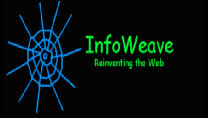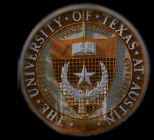Most educational documents that supplement
classroom presentations are predominantly text-based.
One advantage of text-based information repositories is that
they are amenable to computer-based searches.
Video and audio presentations
are often more useful than text in communicating information.
High-quality educational television programs successfully exploit the
effectiveness of audio-visual communication. However, these presentations
are neither searchable nor interactive. They are typically viewed
sequentially and in their entirety.
Hypermedia documents provide users with the flexibility to follow
multiple paths through a document. Most hypermedia documents, however,
are primarily text-based. Although they may include in-line static images or
the ability to present video clips, hypermedia documents remain limited
as information delivery mechanisms.
In InfoWeave, we
seek to incorporate the best features of text, audio-visual, and hypermedia
presentations in a visual environment for
the creation and dissemination of digital educational material.
Our main objective is to create an end-to-end
architecture for supporting next-generation distributed multimedia
applications.
InfoWeave's initial design is based on these concepts:
- The use of searchable, indexed video as the primary medium for
delivering education
- The ability to cross-reference and switch between different
presentation media (e.g., audio, video, text, etc.)
- A model for organizing information at various levels of detail
- The use of collaborative learning tools for enhancing distance
learning and self-paced education.
InfoWeave integrates and builds
upon a large body of research on hypermedia authoring systems, distance
education systems, digital library projects, speech recognition systems,
network protocols, techniques for streaming video, and multimedia file
system design techniques. InfoWeave will enhance the process of delivering
educational material by utilizing video as the primary delivery medium and
utilizing associated text to search for specific video segments. The
entire repository of material will be organized in modules, each of which
encapsulates information on a specific topic. To assist a user to navigate
through the repository, InfoWeave will utlize links that specify
the relationship between information items within modules. Links will be
applied either by publication-time compilation of the links into
the application's hypertext format, or via browse-time user queries on
keywords, phrases, or sections. By supporting various types of links,
InfoWeave will support both reader-driven and author-driven navigation.
Moreover, it will allow users to control their own view of the information.
This navigational facility will support mechanisms to create lectures,
courses, or entire curricula by weaving together a sequence of modules.
Key Results:
To date, we have developed infrastructure technology for storage and
transmission of digital video streams, and a web-based application for
publishing and delivering educational material.
Team Members: Harrick Vin, Jay Misra, Syed M. Amir Husain,
Khurram Mahmood, Scott Page, Prashant Shenoy, Renu Tewari





